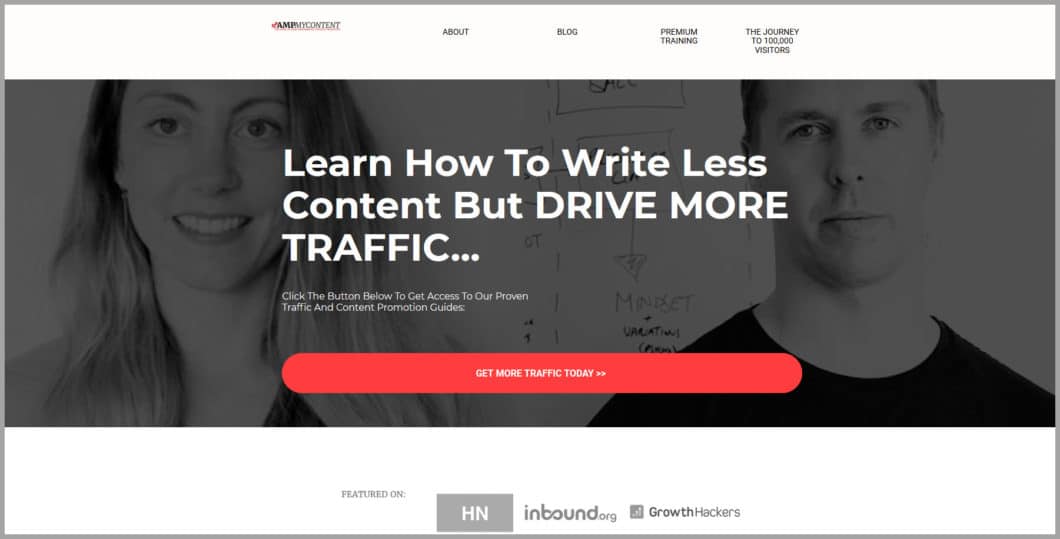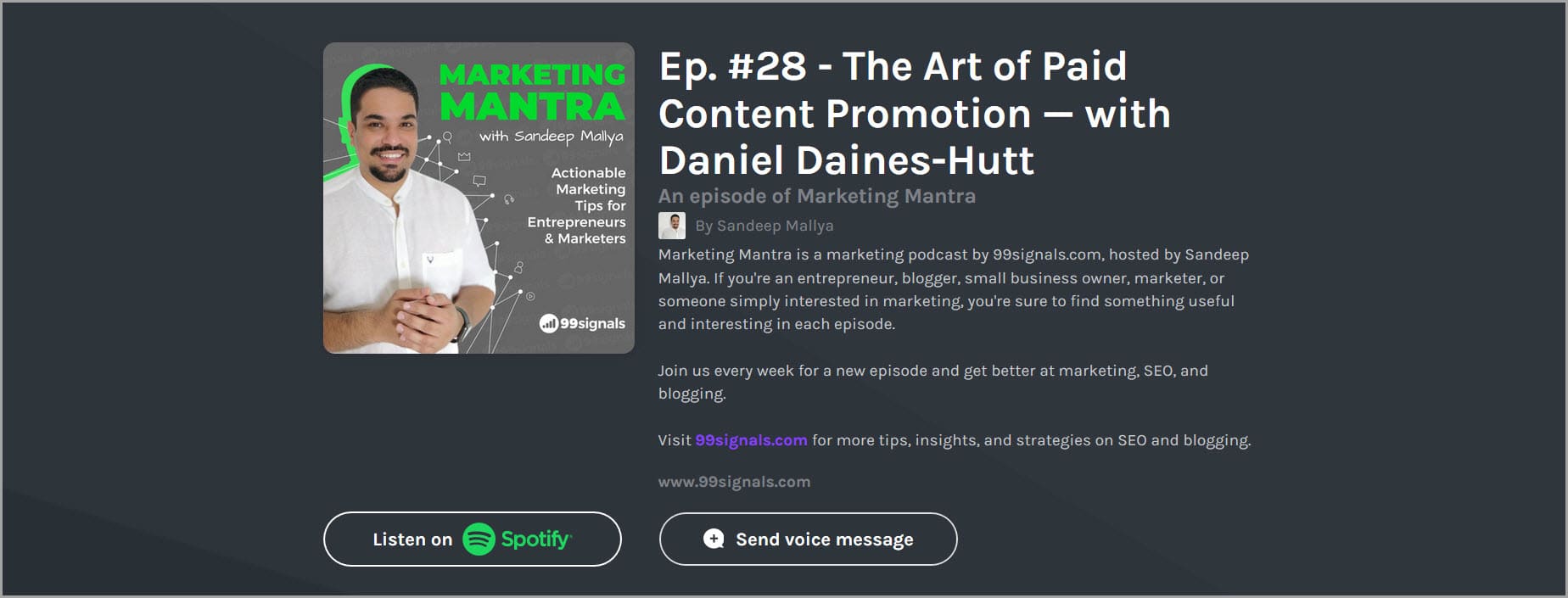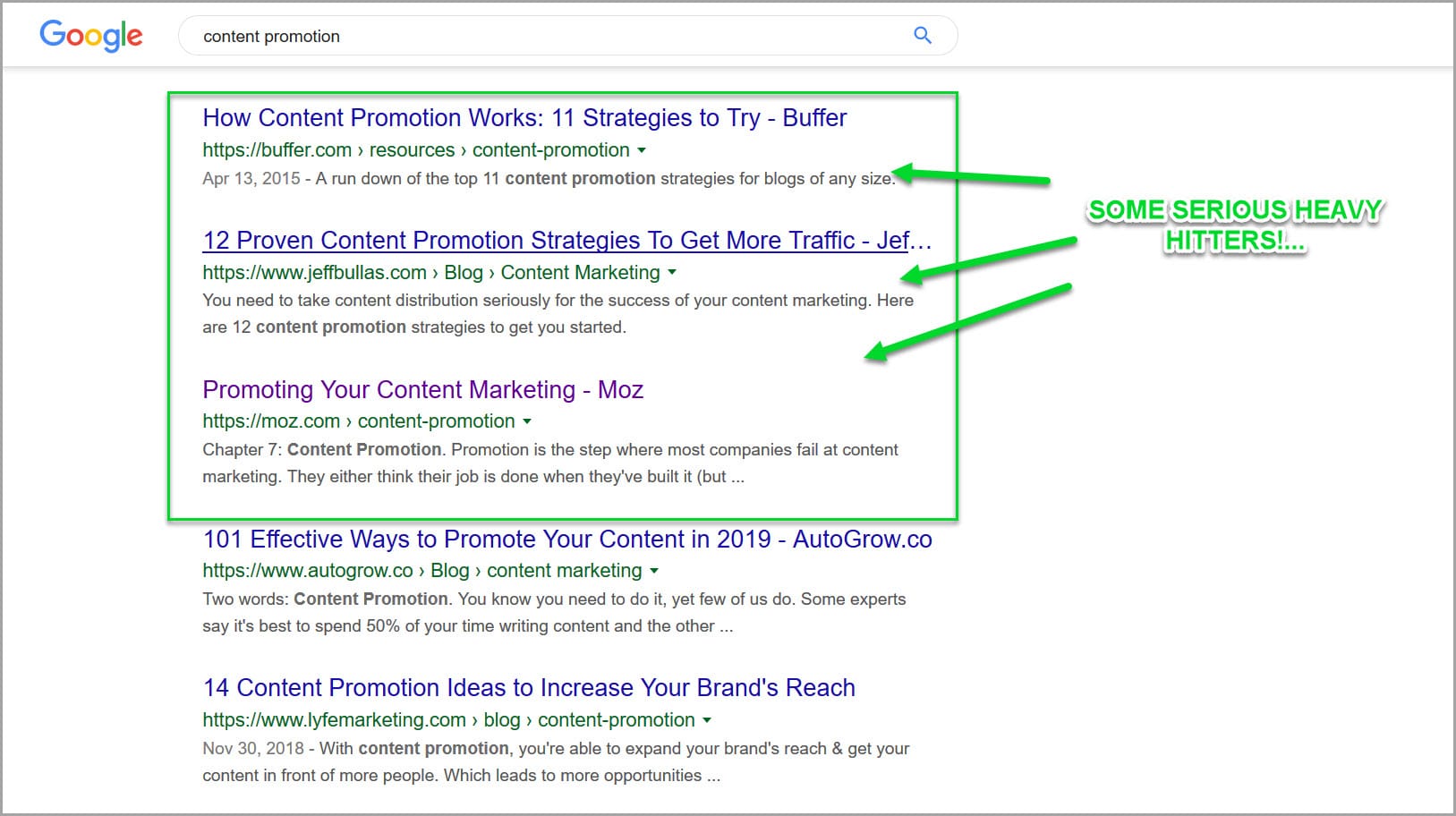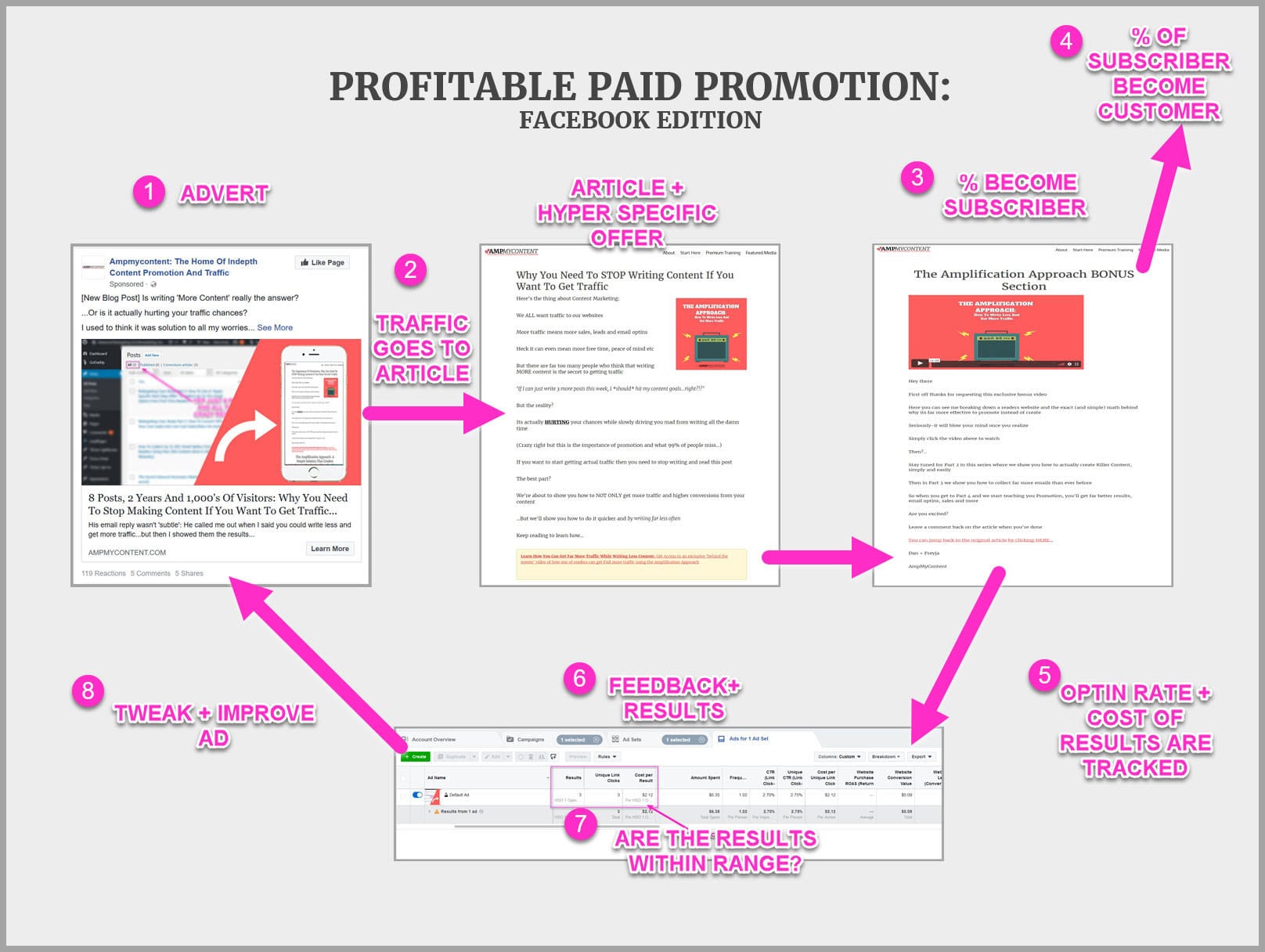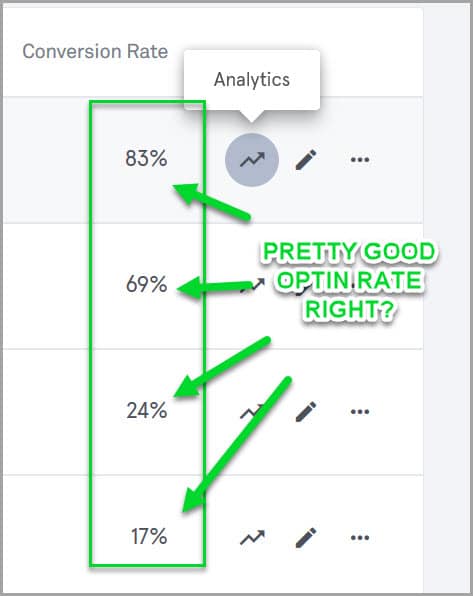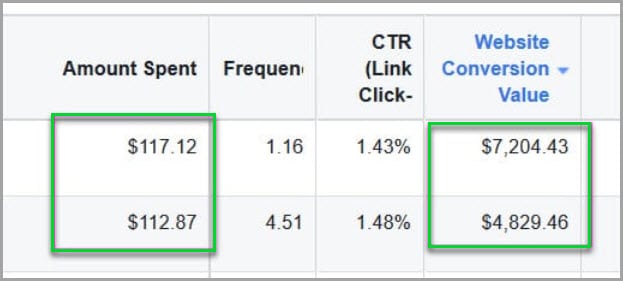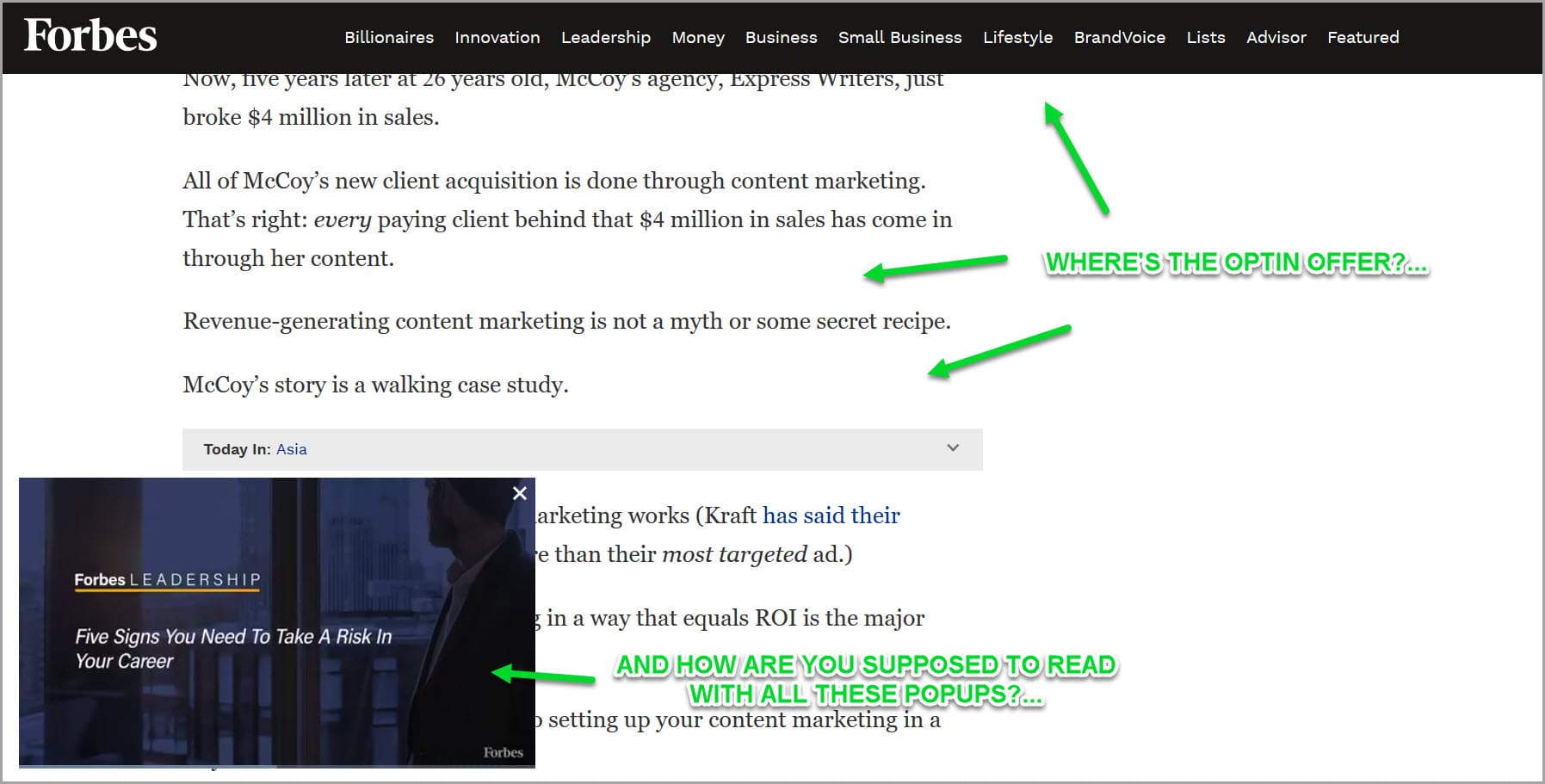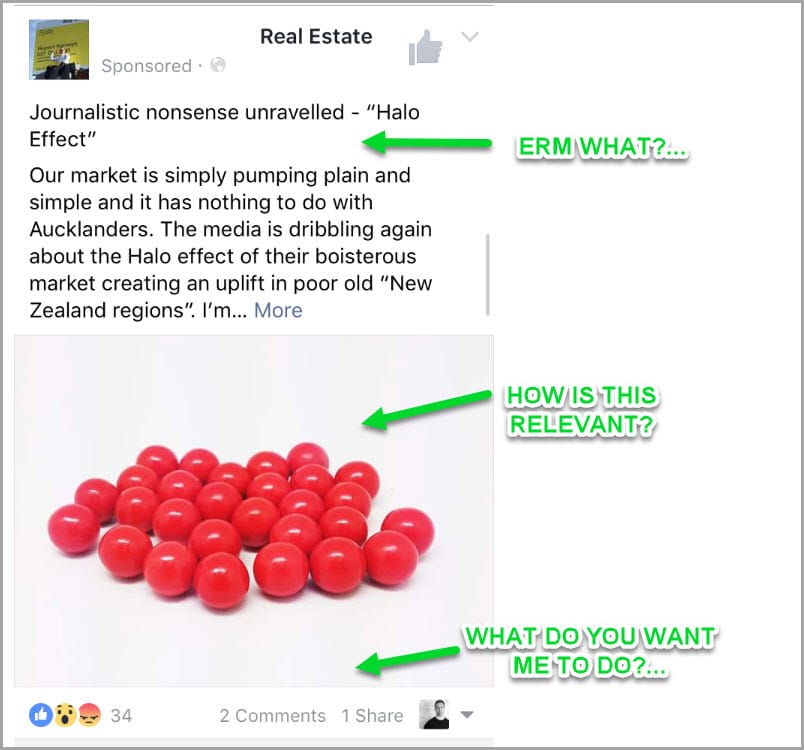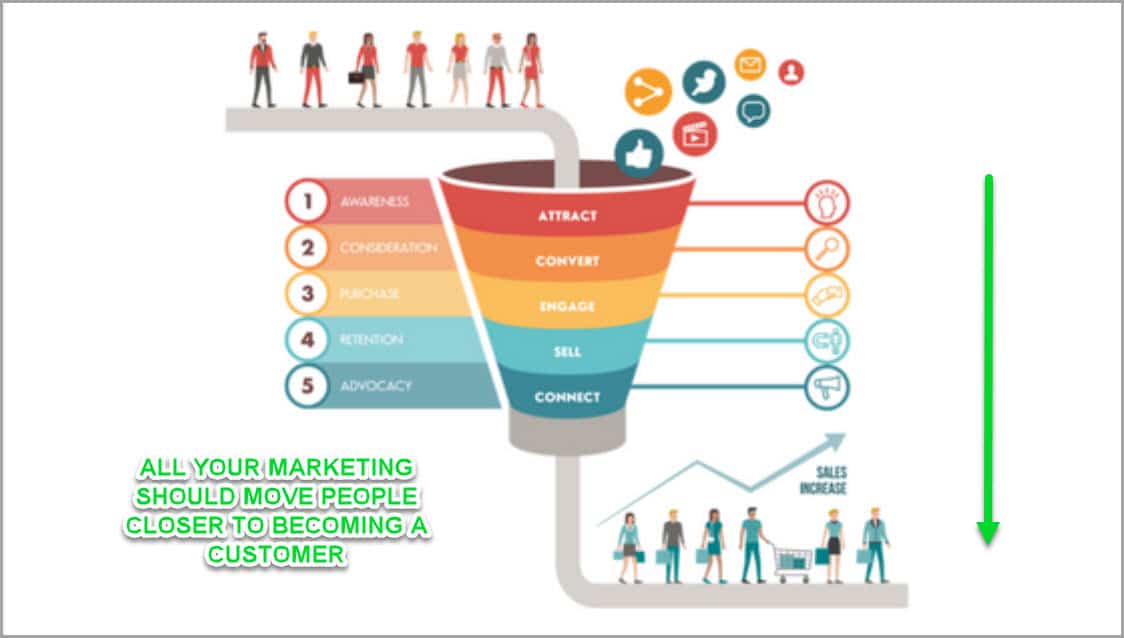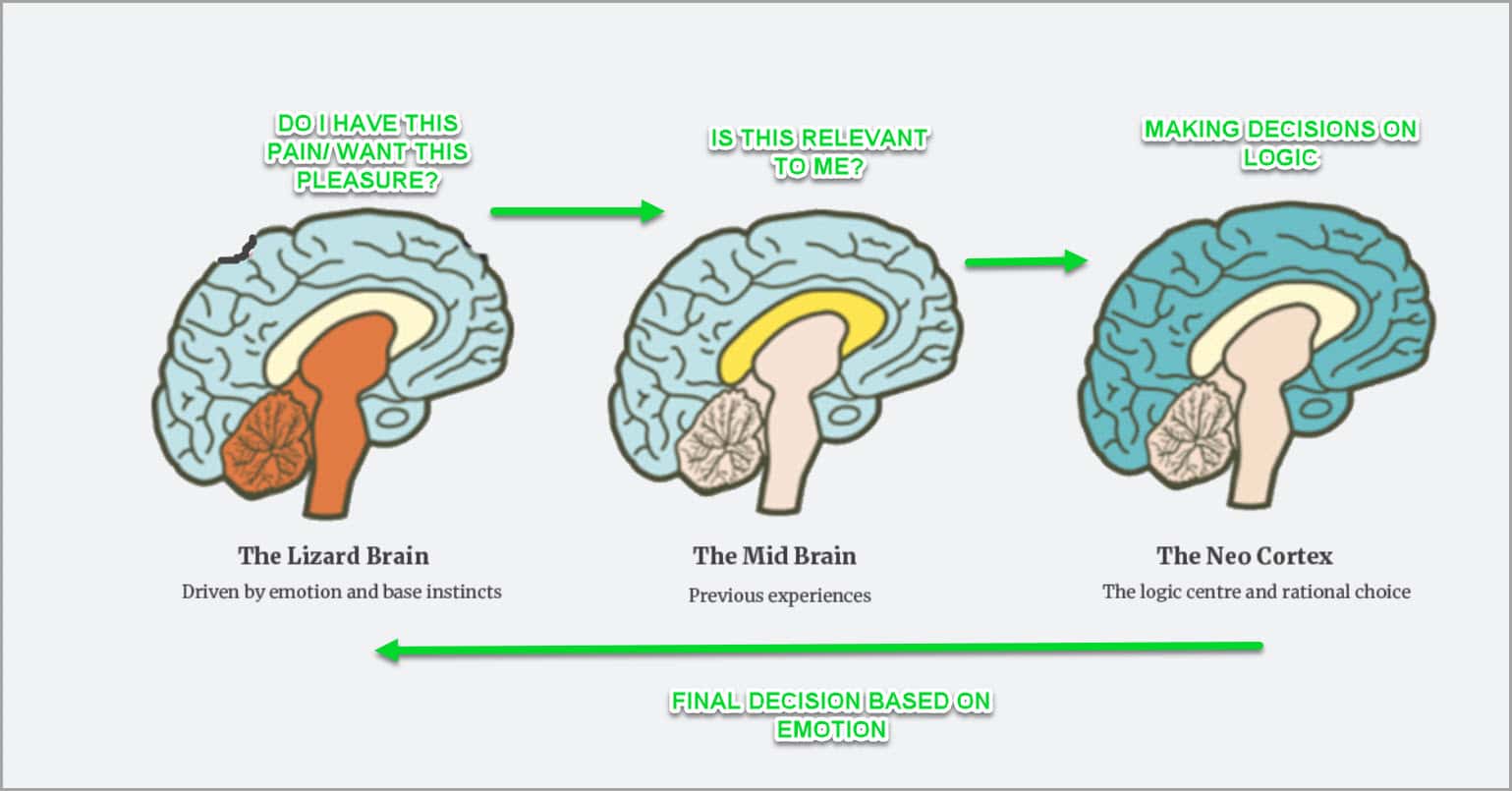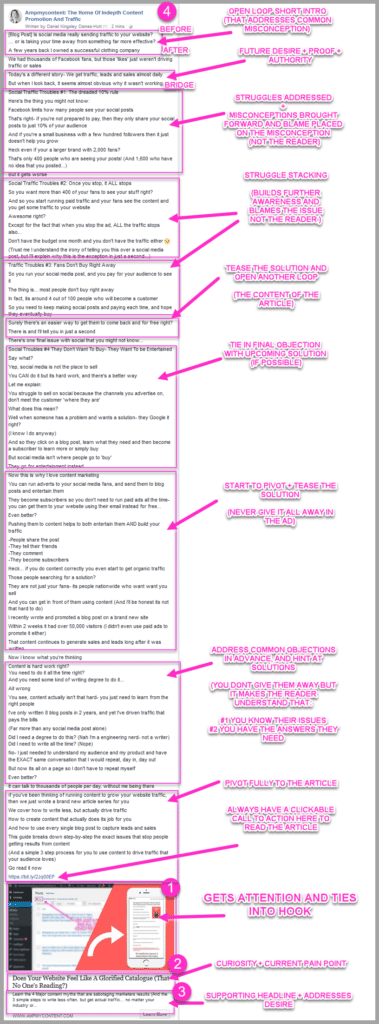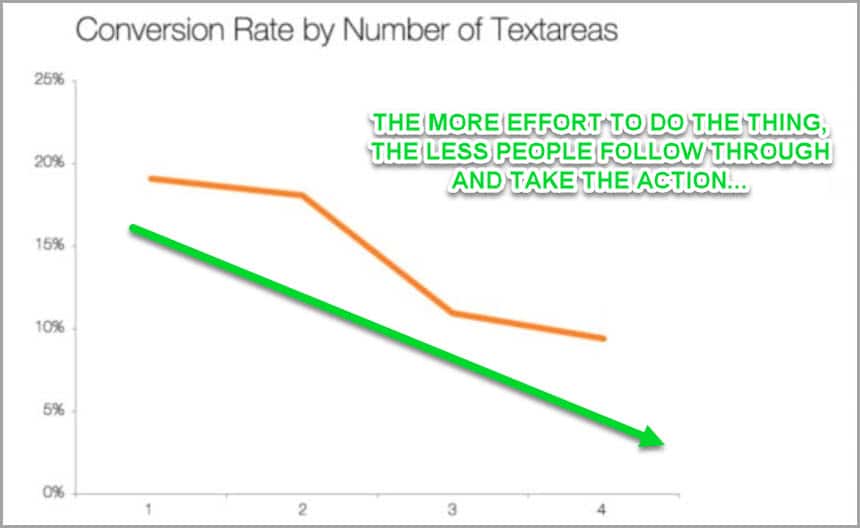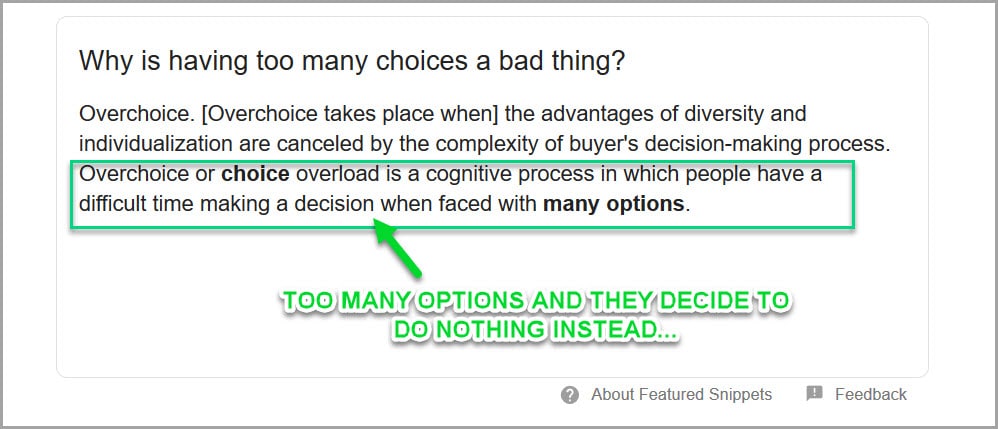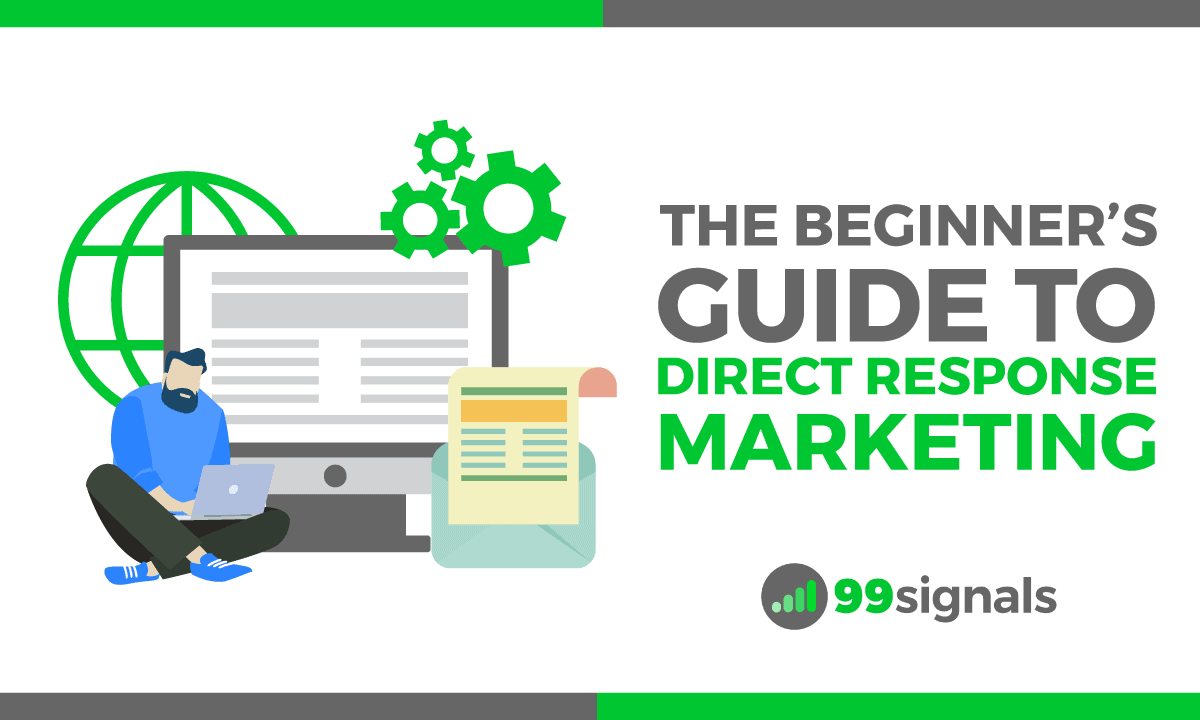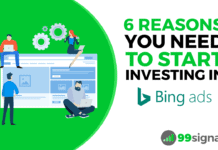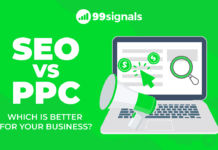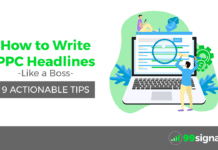 Here's the hard truth:
Here's the hard truth:
Most marketing fails…
Not because it's bad, or because people don't want the product.
But because it misses the fundamentals.
The key things that cause people to take action on what you have.
How would you feel if you not only KNEW that your marketing was working?…
…but you knew down to the dollar?
In today's article we're going to show you how to use old school principles, to make all your marketing far more effective.
Keep reading to learn how…
What Is Direct Response Marketing?
In simple terms?
Direct Response is getting someone to take an action with your marketing, and then measuring how effective it is.
Hence the name.
They take a 'direct response'.
It's a blend of psychology and math, but no joke?
It'll make your website far more effective.
(And also help you sleep better at night)
Why?
Because if you know how well your marketing performs, then you know how well your business performs.
Does this article or advert drive traffic that turns into opt-ins that turns into sales?
Yep!
Does it do it at a cost we can afford/ make a profit from?
Yep!
#party time!
It seems simple right?
But the problem is that most marketing misses this.
They get eyeballs on offers and build awareness, but fail to get the audience to ever do anything.
(Heck most forget to even ask them to do anything!)
Fortunately it's easy to fix.
In fact there are just 3 simple steps:
Step #1: Have a goal for the audience to take
Step #2: Use psychology to make them take that action
Step #3: Measure the results
The best part?
It can work across the board in ALL your marketing.
Better still?
It'll even help you stand out against HUGE competitors…
How Daniel Daines-Hutt Makes $22 For Every $1 He Spends Promoting Content, To New Readers
My name is Daniel and I'm the co-founder of Ampmycontent, a blog that specializes in content promotion.
(We share case studies and guides about the marketing part of content marketing)
Name sound familiar?
You might have heard me recently in episode #28 of The Marketing Mantra podcast
I wanted to come back and add a little more detail to go with that episode.
So…
How do we make such a high ROI?
Is content promotion an easy industry to get into?
Spoiler alert: it's incredibly competitive…
That's 1.2 BILLION results!
Not only that?
But we're competing with some serious industry juggernauts.
Now I've always been an ok content writer, but it wasn't until I found Direct Response marketing, that everything went a little crazy…
The Results
Before we reveal the 3 fundamentals, let's break down some of our results.
Right now, I'm running paid ads to my blog content, so that I get new readers.
Someone clicks on the ad, they read the article and then become a subscriber.
And because the content follows DR principles, it's getting pretty good opt-in rates…
Not bad eh?
Better still?
Because the opt-in rate is good, it means our lead costs are low and the ROI?
It's through the roof…
Now that you've seen the kind of results you can get, let's walk you through the 3-fundamentals to Direct Response Marketing…
Fundamental #1: Always Have A Call To Action
Everything you create, no matter what it is, should have a goal.
A singular thing that you want to happen.
An advert?
Make sure it gets the click.
An article?
Get the opt-in.
A messenger bot?
I know this seems obvious, but it's crazy how many people forget to have a call to action.
How much content is out there with no opt-in offer?
Or adverts that don't tell people how to get it, where to get it, or even ask them to go get it?…
You HAVE to have an action for someone to take.
Not only that?
You have to ask them to do it!
It's not always about a sale, but there has to be something for them to do.
You need to move them forward.
That's how sales funnels work right?
They move a person from one thing to the next, but if you don't give them something to do?…
Then they never become a customer!
Ask yourself this:
- Is any of your marketing missing an end goal?
- Is it missing an action for the person to take?
- What goal should happen from it?
- How can you move them forward?
Once you're clear on your goal, let's show you how to get someone to take it…
Fundamental #2: Make Them Take The Action
Marketing is all about connecting the dots.
It's understanding people and their problems, helping them see that what you have is the solution, and then making the offer.
It doesn't matter if it's selling a product or selling an idea.
The only problem?
Humans are weird.
We don't act like we should, do what we say, or actually want what we think we want…
As marketers we need to learn what drives people.
Not only that?
We need to know how to communicate with the audience.
So let's break it down…
The 7 Emotional Drivers
We're all motivated by emotion.
It's what makes us do anything.
Get out of bed, go to work, say the things we do and act they way we are.
The thing is?
Those emotions change depending on the situation…
There are 7 core drivers:
- Self Identity (the need to see ourselves in the the offer or solution)
- Need for Certainty and to remove anxiety
- Need for Uncertainty and to create excitement
- Need to feel Significance from others
- Need for Connection from others
- Need for Growth and struggle
- Need to Contribute and give
The audience is always feeling one of these things.
Your goal is to figure out which, and then use it to help motivate them forward.
(Sometimes it's a combination but there's always one major driver)
For Example:
99signals is a marketing blog right?
Chances are you're a digital entrepreneur or a freelancer in the marketing space.
Rather than be scared of change, I'm guessing you're motivated by growth right?
(With maybe a need to contribute and support others?)
Once you understand what your audience needs, then you simply connect the dots.
What they want, what motivates them and how does your offer or goal help that happen?
The easiest way to find this all out?
Simply ask them!…
How To Research Your Audience
One of the easiest ways to find out what your audience needs, is to ask them.
I like to have coffee or jump on a Skype call with 3 people:
- Someone who has the problem, but isn't aware of what the problem is
- Someone who has the problem and is looking for a solution
- And someone who's solved the problem already.
Why talk to all 3?
Because there's a journey there.
From pain, to problem and solution finding, to past the problem.
By speaking to them at each point, I can understand what motivates them at each stage of their journey.
Better still?
You can find the language that they use to describe these things:
- The struggle and unknown issues
- The pain they have
- They way they feel now that it's solved…
Why care?
Because if you can figure out your audience issues AND use the language they use?
Then it feels like you're inside their head!
And all it takes is a few cups of coffee and some questions…
Easy right?
So now you know what motivates them, now you need to communicate with them.
The thing is?
You need to be careful just how you say it…
How We Process Information
Without getting too technical, our brain works in a 3 part system:
- The Lizard Brain (Base emotions and drivers)
- The Mid Brain (Previous experiences)
- The Neo Cortex (The logic centre)
Why care?
Because we filter information from one part to the next.
(Similar to a sales funnel)
This means that information has to pass one gatekeeper and then the next.
We need to talk to the emotion first, THEN the experience and finally the logic.
This is why we state that people buy based on emotion!
(Because it's the first thing that gets their attention, and it's what drives the final action)
Sure, we will give a logical reason why we took action, but really it's a motivational driver that made it happen
Take a look at this ad below:
This is the same ad that we use to drive traffic to our article
Notice how it follows a set path or process, working through that '3-brain' system
It talks to the emotion, then the experience and finally the logic centre
Even better?
It uses the language that the audience uses!
This is how you get someone to take your call to action:
- The goal or desire (Emotion)
- The pain of where they are now (Emotion)
- The future of where they could be (Emotion)
- The experience and objections removed (Mid Brain)
- The stacking of desire (Mid Brain)
- The logical and emotional action (Neo Cortex)
See how it moves through those 3 phases?
This works regardless of what your marketing, or what your CTA is.
Ads, articles, emails etc.
If you follow that process, you'll help drive your audience towards wanting your call to action.
So now you know what your audience needs to hear, and how to structure your message.
The last thing you need is know is how to make that call to action!…
High Converting Calls To Action
There is a lot of content out there on writing calls to action.
The reality?
There are just 3 key things that you need:
- Remember to have a call to action
- Make it simple to do
- Remove all other distractions.
That's all there is to it.
Let me explain…
We already know that most people forget to have a CTA, so by having one, they are already more likely to take your action.
But the thing is?
People are lazy.
If something is too complicated or difficult, they usually won't do it.
That's why the more simple it can be to do the thing- the higher the chance they will do it.
(In the example above, for every extra box on a form, your conversion rate drops significantly…)
This ties into the 3rd point also.
If you have too many choices or distractions?
Too many calls to action competing with each other?
Then it overwhelms them!
And so what's their choice?
It's to take NO action at all!
That's all you need to make an effective call to action
- Have a CTA to start with
- Make it simple to take
- Remove other choices.
Easy right?
Ask yourself this:
- Do you understand your audience and what motivates them?
- Does your content resonate with them?
- Does it move them towards a goal?
- Do you have an action for them to take?
- Is it simple to do?
- Have you removed all other distractions?
If so, then awesome!
You now have a CTA that converts.
Better still?
You can now measure how it performs and see how well your marketing works…
Fundamental #3: Measure The Result
This is where people get scared with Direct Response.
Why?
Math!…
Scary math!
Don't worry though because it's super simple
The formula is almost always this:
How many people saw your CTA / How many took your CTA = Your Conversion Rate
Why care?
Because now you know how effective your offer is at moving people forward (or even making them buy.)
Better still?
You can do this at each point in your sales cycle and see where it's working, and what's missing.
(Or if it's worth scaling or improving.)
For example:
I know that we make $22 for every $1 spent promoting content.
How?
Because I know my conversion rates at each point of our sales cycle.
I knows how much:
- A visitor is worth
- How many turn into subscribers and what a subscriber is worth
- How many subscribers become customers, etc.
And the formula stays the same at each point
How many people saw the cta / how many took the cta = the conversion rate at each stage
By knowing this and having it all in place, it can make all your marketing far more effective AND give you the ability to scale up.
(Or simply sleep better at night.)
This is the power of Direct Response marketing.
Ask Yourself:
- Do you have CTAs at each point of your sales funnel?
- Do you know the conversion rate of each?
- Do you know what a visitor, subscriber or customer is worth to your business?
The best part?
Depending on what platforms you use, you can see all this information right away.
FB pixels track conversions and costs
Email CRMs track opt-ins and conversion rates etc
The trick?
It's simply to implement it…
So Now It's Your Turn…
Have a quick look over your own marketing:
- Is any of it missing these Direct Response fundamentals?
- Do you have a goal for everything you create?
- Do you have a call to action?
- Or do you have too many CTAs and stop people from choosing?
Better still?
Ask yourself this:
How would your business change if you implement these small steps?
If you want to learn more about Direct Response (as well as how to run ads to your own content a profit) check out my 30,000 word, 8 chapter guide to paid content promotion.
If you found this article useful, please consider sharing it on Twitter using the link below:
[ctt template="3" link="r8c20" via="yes" nofollow="yes"]The Beginner's Guide to Direct Response Marketing[/ctt]
Related Articles


